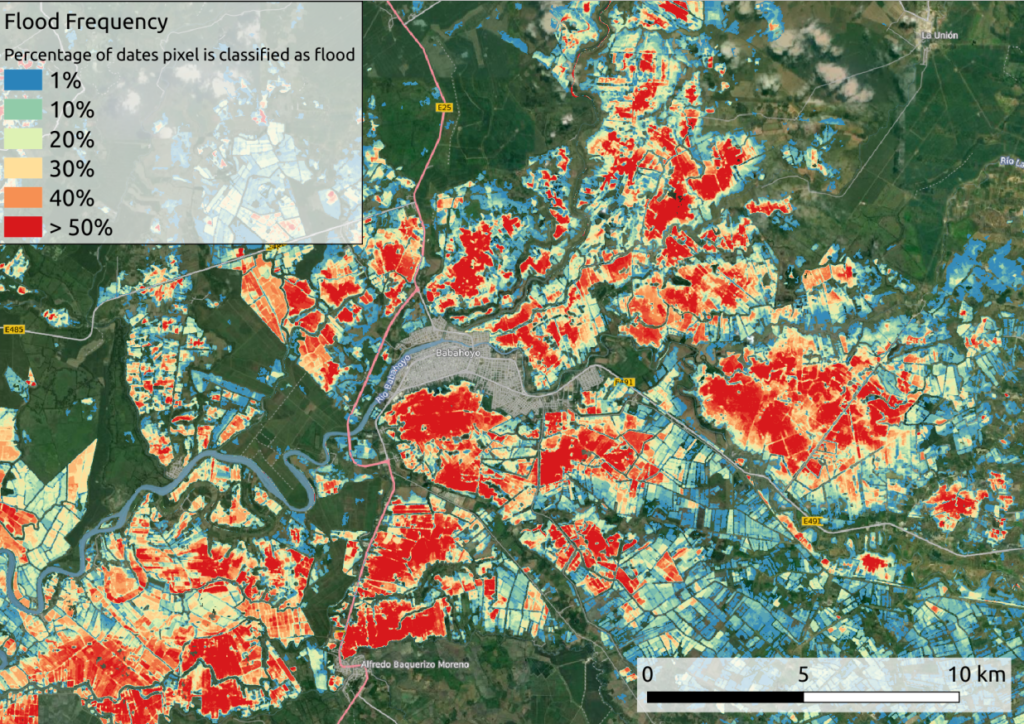Flooding is one of the most frequent natural disasters worldwide, and the damage caused can often only be quantified very imprecisely, depending on the region affected. The Sendai Framework for Disaster Risk Reduction 2015-2030 is therefore based on a series of standardized indicators that are intended to reflect the annual impact of natural disasters as fully as possible. The BMWI-funded research project VALE(Development and validation of earth observation-based indicators for monitoring the Sendai Framework using the example of floods in Ecuador) is investigating the extent to which remote sensing data can be used to calculate these indicators. Specifically, it is about the derivation of annual flood statistics using the example of Ecuador.

